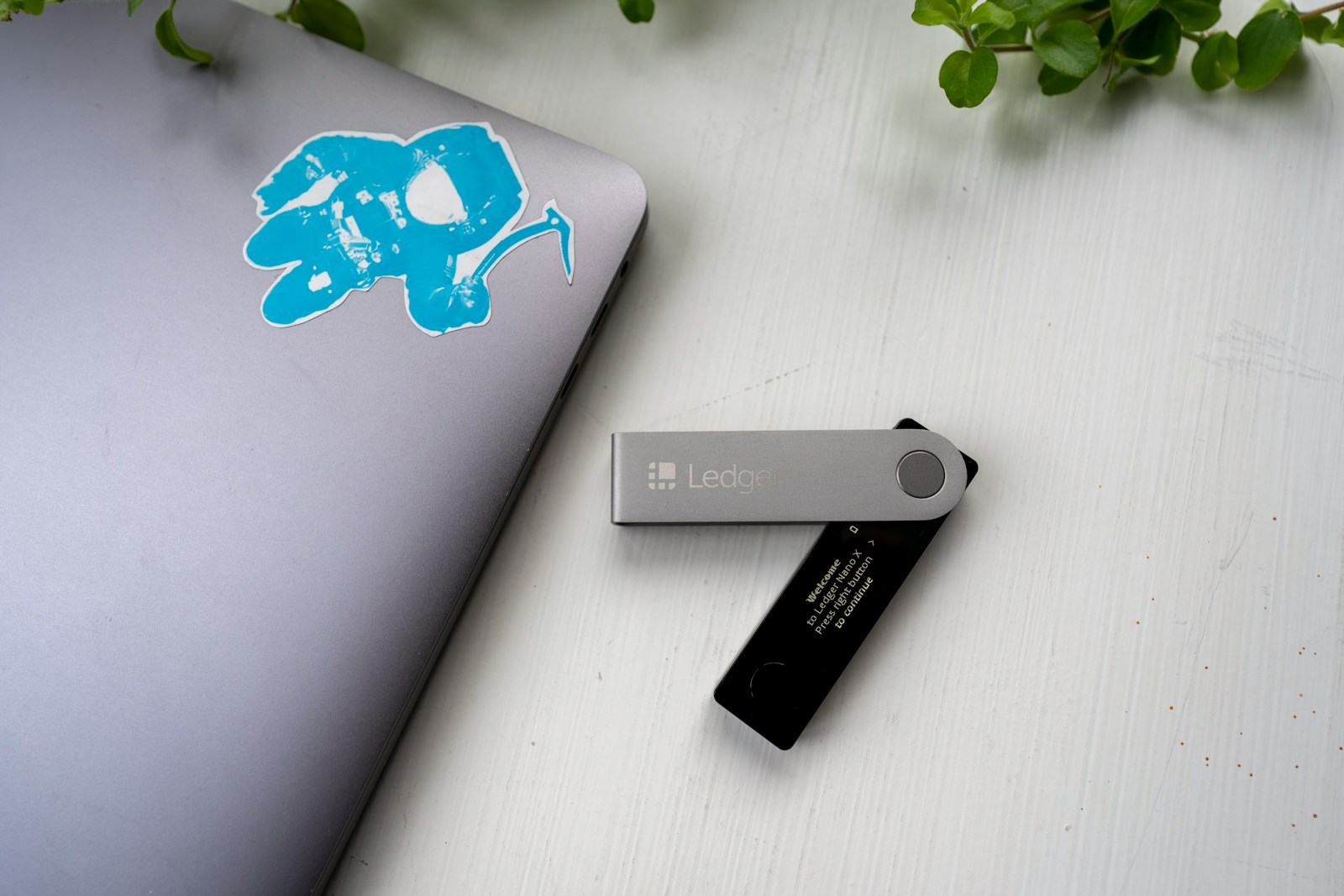
Control over critical operations demands a system where no single entity can unilaterally authorize sensitive actions. Utilizing a cryptographic method that mandates the collaboration of several parties before generating valid signatures significantly enhances organizational resilience. By setting a specific numerical limit–often denoted as _t-out-of-n_–this approach ensures that only when at least _t_ participants agree does the process proceed, reinforcing security through collective responsibility rather than individual discretion.
This mechanism offers robust protection against insider threats and accidental mismanagement. For instance, financial institutions increasingly adopt such schemes to guard high-value transactions, requiring consensus from multiple officers before funds can be moved. Recent implementations in blockchain governance highlight how distributed approval models mitigate risks associated with single points of failure while streamlining decision-making workflows by avoiding the need for unanimous consent.
The underlying principle balances efficiency and trust: too few endorsers weaken safeguards; too many slow down operations unnecessarily. Studies show that setting thresholds between 60% to 75% of total signatories optimizes both security and agility, adapting well to environments where rapid yet safe authorization is paramount. How organizations define these parameters often reflects their risk appetite and regulatory constraints, proving this strategy’s flexibility across diverse sectors.
Moreover, consensus-driven signature generation introduces cryptographic guarantees that signatures are indistinguishable from those created by a single signer, preserving compatibility with existing verification protocols. This seamless integration eliminates friction during audits or compliance checks while maintaining rigorous access controls. As cyber threats evolve and regulatory frameworks tighten globally, deploying such multi-endorsement frameworks emerges as a practical standard for safeguarding digital assets and operational integrity.
Threshold signatures: requiring multiple approvals together [Wallet & Security security]
Implementing a cryptographic scheme that mandates collective authorization from a subset within a group significantly enhances control and protection of digital assets. This method distributes signing power among participants, ensuring no single entity can unilaterally execute transactions or changes without consensus. For example, a 3-of-5 control model requires at least three entities to cooperate before the wallet permits an operation, effectively mitigating risks associated with compromised keys.
The security benefits stem from minimizing attack vectors targeting individual private keys. By embedding this mechanism into wallet infrastructure, organizations can enforce robust governance policies while maintaining operational flexibility. The ability to define the exact number of required endorsements allows tailoring protection levels according to asset value or organizational structure, creating scalable defense against unauthorized access.
Technical principles and consensus dynamics
This approach relies on advanced cryptographic algorithms such as Schnorr or BLS (Boneh–Lynn–Shacham) schemes that enable aggregation of partial signatures into a single compact result indistinguishable from standard ones. The process ensures that only when enough participants provide their unique cryptographic inputs does the final signature become valid. This collective generation prevents any subgroup smaller than the threshold from producing an authentic signature, reinforcing both confidentiality and integrity.
In practice, these systems depend on secure communication channels among group members for exchanging nonce commitments and partial signatures during signing sessions. One illustrative case is in institutional custody solutions where trustees must reach consensus off-chain before broadcasting aggregated signatures on-chain, balancing transparency with privacy requirements. Moreover, recent upgrades in blockchain protocols facilitate native support for aggregated verification, reducing computational overhead compared to verifying each approval individually.
Comparative analysis reveals that schemes demanding predefined numbers of consents outperform traditional multisignature setups by reducing transaction size and verification time without compromising security guarantees. For instance, Bitcoin’s Taproot upgrade integrates such mechanisms enabling wallets controlled by groups to generate a single public key representing all signatories collectively. This advancement streamlines user experience while preserving rigorous control standards.
However, deploying this architecture requires careful key management and participant coordination to prevent delays or deadlocks caused by unavailable signers. Mitigation strategies include assigning backup signers or implementing fallback protocols triggered if primary endorsers fail to respond within set intervals. Real-world implementations like Fireblocks demonstrate how combining threshold-based authorization with secure hardware modules creates resilient environments protecting billions in crypto holdings under volatile market conditions.
Implementing threshold signatures
For robust protection in decentralized environments, a scheme that mandates collective authorization from a predefined subset of participants enhances security substantially. By dividing cryptographic signing capabilities across a group, only when a specific quota–commonly called the threshold–is reached can valid cryptographic endorsements be generated. This mechanism limits unilateral control and mitigates risks linked to key exposure or insider threats.
The architecture requires each entity within the group to hold a distinct share of the private key. Individual partial signatures are aggregated once consensus on an operation is achieved, producing one compact and verifiable signature equivalent to traditional single-key outputs. Notably, implementations like Shamir’s Secret Sharing combined with schemes such as Schnorr or ECDSA adaptations enable this functionality while maintaining compatibility with existing blockchain protocols.
Technical foundations and applications
Security relies on mathematically sound distribution of secret shares so that fewer than the set number cannot reconstruct the full signing authority. For example, in financial custody solutions, requiring 3 out of 5 trustees to approve transactions reduces risk without compromising agility. This approach also finds use in distributed validator sets within Proof-of-Stake networks, where collective approval ensures fault tolerance and resistance against malicious actors attempting unauthorized changes.
The consensus process involves interactive protocols where members exchange partial computations securely. Modern frameworks optimize communication overhead by minimizing rounds through non-interactive zero-knowledge proofs or batch verification techniques, improving scalability for large groups. Real-world cases include projects like Gnosis Safe and Blockstream’s multisig wallets, which integrate threshold mechanisms to balance usability with stringent control over asset movements.
A comparative advantage lies in enhanced protection from single points of failure compared to traditional multisignature schemes that require multiple independent signatures separately verified on-chain. Threshold signatures produce one aggregated output indistinguishable from standard digital signatures, reducing blockchain footprint and transaction costs significantly–a critical factor given increasing gas fees and network congestion observed in Ethereum and similar platforms recently.
Nevertheless, implementation challenges must be addressed carefully. Secure setup procedures for distributing shares without exposing secrets demand trusted initialization or advanced cryptographic protocols such as Distributed Key Generation (DKG). Furthermore, handling member churn–adding or removing participants dynamically–requires reconfiguration protocols ensuring continuity without weakening overall security guarantees. Continuous research explores these aspects to improve flexibility while preserving rigorous control standards demanded by institutional deployments.
Configuring multi-approval wallets
For enhanced protection of digital assets, configuring a wallet that mandates collective authorization is a strategic approach to security. Such configurations rely on the cooperation of a predefined group, requiring that a minimum number of individual authorizations be validated before any transaction executes. This mechanism limits unilateral control and reduces risks associated with compromised keys or insider threats. For instance, in an environment where five custodians exist, setting the control threshold at three ensures that no single party can act independently, thus enforcing consensus within the group.
The architecture enabling this setup uses cryptographic techniques to split control among participants without exposing private keys. Control schemes often utilize advanced algorithms that generate partial data fragments distributed across stakeholders. Only when the required count of these fragments combines can valid permission be produced. This distribution not only boosts security but also maintains operational efficiency by allowing flexible consensus models–such as 2-of-3 or 4-of-7–tailored to organizational governance policies and risk tolerance levels.
Technical considerations and practical implementations
Implementing such wallets demands careful calibration between usability and stringent security standards. The selection of an adequate approval quota must reflect operational needs; too high a number may hinder timely decision-making, while too low compromises safety. Notably, enterprises like BitGo have demonstrated success with configurable group controls, employing cryptographic protocols that guarantee finality only after reaching agreement thresholds. These solutions often integrate with hardware modules for key storage, enhancing resistance against external attacks.
Recent developments in distributed ledger technologies show promising results in scalability and resilience for multi-participant authorization frameworks. An example includes decentralized finance platforms where governance tokens define consensus structures dynamically, adjusting approval requirements in response to evolving risk assessments or stakeholder changes. Such adaptability underscores the importance of periodic audits and upgrades within control systems to maintain robustness amid shifting market conditions and threat vectors.
Managing key shares securely
To maintain robust protection over distributed cryptographic keys, it is critical to implement stringent measures for managing partial secrets within a group. A common approach involves splitting a private key into several fragments, each held by different participants, ensuring that only a defined subset can collaboratively generate valid authentication tokens. This method enhances control by preventing unilateral actions and enforces collective responsibility, reducing single points of failure while preserving operational efficiency.
Effective security protocols must address both the physical and logical safeguarding of these fragments. Employing hardware security modules (HSMs) or secure enclaves significantly mitigates risks related to unauthorized access or leakage. Additionally, encrypted communication channels for share distribution and storage play an important role in maintaining confidentiality. For instance, in 2023, several decentralized finance platforms reported increased resilience against cyberattacks after adopting multi-party key management systems combined with hardware-based protections.
Ensuring consensus and preventing misuse
The mechanism by which group members reach agreement before executing cryptographic operations fundamentally influences system integrity. Establishing strict policies on how many participants must concur before generating an authentication token provides a balance between usability and security. In practice, this means defining a minimum number of endorsements required to validate transactions or sensitive commands. Such consensus frameworks are employed by blockchain validators to prevent rogue activities without introducing excessive delays.
Moreover, audit trails that log every attempt to combine partial secrets are indispensable for transparency and accountability. These logs enable retrospective analysis in case of suspicious behavior or breaches. The Ethereum 2.0 upgrade offers a relevant example: its validator consensus protocol incorporates layered approval thresholds coupled with detailed monitoring tools, enhancing trustworthiness without compromising decentralization principles.
Control over share distribution also involves periodic rotation and revocation strategies to limit exposure time and adapt to personnel changes within the group. Rotating key shares at scheduled intervals reduces vulnerability from compromised holders while maintaining uninterrupted system functionality. Real-world implementations such as the Cosmos network utilize automated re-sharing mechanisms triggered by governance proposals, thus aligning operational security with evolving organizational structures.
Finally, integrating advanced cryptographic techniques like verifiable secret sharing (VSS) strengthens protection against malicious actors attempting to reconstruct the full secret illicitly. VSS schemes allow participants to verify the correctness of received shares without revealing them outright, preserving confidentiality throughout the process. Combining these methods with secure multiparty computation (MPC) protocols enables groups to produce valid authentications collectively without exposing individual contributions–an approach increasingly adopted in enterprise-grade blockchain solutions seeking resilient yet flexible control models.
Preventing Unauthorized Transactions
Implementing cryptographic validation that demands consent from a designated number of participants within a collective significantly enhances transactional integrity. This approach eliminates single points of failure by requiring a collaborative endorsement process, thereby reducing the risk of unauthorized asset movements. For example, in multisig wallets, transactions activate only after several distinct cryptographic proofs are provided by members of an authorized group, ensuring robust operational control.
Consensus mechanisms underpin this security paradigm by verifying that transaction execution aligns with predefined governance rules. Distributed ledger platforms like Ethereum have integrated smart contracts which enforce group-based transaction approvals automatically. This layer of coordination mitigates fraudulent activities and reinforces accountability across decentralized networks, as no individual can unilaterally bypass the established protection protocols.
Technical Insights on Collective Authorization
The use of collaborative digital endorsements introduces resilience against key compromise scenarios. By distributing control over multiple independent actors–each holding a piece of the authorization puzzle–the system inherently resists malicious exploitation. A relevant case study involves Bitcoin’s implementation of multisignature addresses that require signatures from at least 2 out of 3 keys to release funds; this design prevents theft even if one key is exposed.
Security audits reveal that systems relying on solitary private keys witness significantly higher breach rates compared to those employing shared verification schemes. Incorporating collective validation not only elevates defense layers but also supports granular permission models where subsets within groups can be defined for specific operations. This flexibility enhances governance without sacrificing responsiveness or increasing procedural overhead.
Recent developments in cryptographic research demonstrate how advanced schemes–such as aggregated digital authenticators–can compress multiple endorsements into a single verifiable entity, optimizing network efficiency while maintaining rigorous control standards. Given escalating cyber threats and regulatory scrutiny, integrating group consensus models offers a pragmatic balance between operational agility and stringent protection measures across contemporary blockchain infrastructures.
Troubleshooting Failures in Collective Cryptographic Endorsements
Ensuring that a group’s collective cryptographic endorsements meet the required participation level is fundamental for maintaining system integrity. Failures often arise from improper coordination of key shares, misconfigured quorum parameters, or network latency disrupting the aggregation process. Addressing these issues demands rigorous verification of each participant’s partial endorsement and continuous monitoring of communication channels to prevent delays that can break consensus.
Protection against unauthorized actions hinges on correctly enforcing the minimum number of consents needed to validate transactions. For example, in a 5-of-7 control scheme, missing even one consent due to misaligned clocks or invalid keys compromises overall security and halts transaction finalization. Implementing robust fault-detection mechanisms and fallback protocols enables groups to recover from individual node failures without sacrificing protection or consensus stability.
Technical Insights and Future Implications
- Verification Layers: Incorporating multi-stage validation–such as zero-knowledge proofs accompanying partial endorsements–can reduce false negatives in signature reconstruction while enhancing confidentiality within the control group.
- Adaptive Consensus Models: Emerging algorithms dynamically adjust consent thresholds based on real-time network conditions, balancing security with availability. This approach mitigates risks posed by transient faults without lowering protection standards.
- Cross-Chain Coordination: Recent deployments demonstrate that synchronized endorsement across heterogeneous ledgers demands advanced interoperability protocols ensuring consistent threshold enforcement without exposing vulnerabilities.
The broader impact lies in how these improvements not only reinforce transactional security but also empower decentralized governance structures by distributing control more resiliently among participants. As blockchain ecosystems expand, refining error-handling strategies in group-based cryptographic approvals will be pivotal for scalable trust models. Could integrating machine learning techniques into anomaly detection further enhance reliability? Early experiments suggest promising avenues for predictive diagnostics that preempt signature failures before they affect consensus outcomes.
Ultimately, developing comprehensive frameworks combining cryptographic rigor with operational flexibility will define next-generation systems’ capacity to uphold stringent security guarantees amid complex network dynamics. Continuous innovation around fault tolerance and group-based authorization mechanisms remains integral to preserving user confidence and facilitating broader adoption of collaborative digital asset management solutions.






